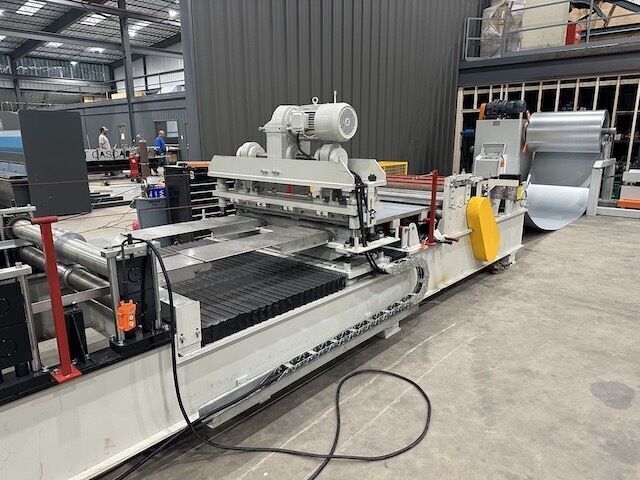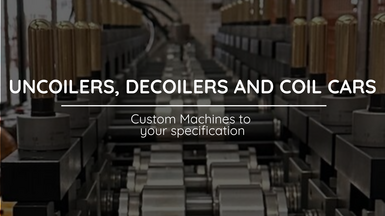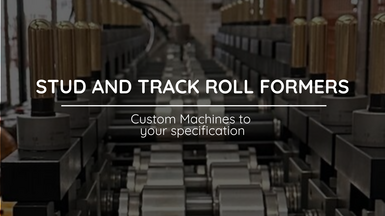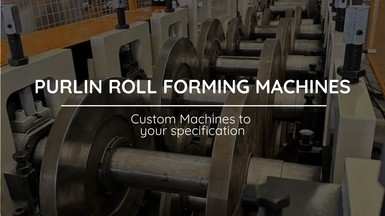
Form Deck Roll Forming Machine
Here's an overview of how a Form Deck Roll Forming Machine works and its primary features:
Posted on Thursday, November 23, 2023
A Form Deck Roll Forming Machine is a specialized industrial machine used in the construction and manufacturing industry to produce form deck profiles. Form decks are typically used in construction projects as a structural component for supporting concrete slabs in buildings such as commercial and industrial facilities.
Here's an overview of how a Form Deck Roll Forming Machine works and its primary features:
- Roll Forming Process: The machine employs a roll forming process, which involves passing a continuous strip of metal coil through a series of rollers. These rollers gradually shape the metal into the desired form deck profile. The rollers are designed with specific contours and sizes to create the required shape.
- Material Feeding: A coil of steel or other suitable metal material is loaded onto the machine. The material is then fed into the roll forming section.
- Roll Forming Sections: The machine typically consists of multiple roll forming sections, each responsible for shaping a specific part of the form deck profile. The sections are often adjustable to accommodate different profile designs and sizes.
- Cutting and Shearing: After the metal strip has been formed into the desired profile, the machine includes cutting or shearing mechanisms to trim the form deck to the required length. This ensures that each piece of form deck is uniform and meets the project specifications.
- Stacking and Collecting: Once the form deck sections are cut to size, they are stacked or collected for further processing or transport.
Key features of a Form Deck Roll Forming Machine may include:
- Rollers with adjustable settings to accommodate various profile shapes and sizes.
- Automatic control systems to monitor and adjust the roll forming process for precision.
- Cutting and shearing mechanisms with precise control for accurate length cutting.
- Safety features to protect operators and ensure safe operation.
- High production capacity, making it suitable for large-scale manufacturing.
- Durability and reliability to handle continuous operation over extended periods.
Form decks are crucial in construction for creating a sturdy and even surface upon which concrete can be poured, forming the floor or roof of a building. The roll forming process allows for the efficient and cost-effective production of form decks with consistent quality, making it a valuable tool in the construction industry.
Form Deck Profile
A Form Deck Profile refers to the specific shape or design of a form deck used in construction. Form decks are structural components used in the construction of buildings, particularly in the creation of concrete floors and roofs. They provide a stable framework for the pouring of concrete, creating a solid surface that can support the weight and load-bearing requirements of the structure.
Form deck profiles are typically made from steel or other materials with high strength and durability. The choice of form deck profile depends on the specific structural and design requirements of the building project. Here are some common form deck profiles:
- "B" Deck: This is one of the most common form deck profiles. It has a flat top surface with ribs or embossments running parallel to the length of the deck. "B" deck profiles are often used in single-ply membrane roofing systems.
- "N" Deck: "N" deck profiles have a flat top surface and often feature narrow, closely spaced ribs running perpendicular to the length of the deck. These decks provide excellent shear strength and are commonly used in composite floor systems.
- "F" Deck: "F" deck profiles have a flat top surface with wider and deeper ribs compared to "N" deck profiles. They are suitable for heavier loads and are commonly used in parking garages and industrial buildings.
- "1.5" Deck: This type of form deck has a flat top surface and is often used in conjunction with concrete toppings to create composite floors. It is named "1.5" because it has a 1.5-inch rib height.
- Cellular Deck: Cellular deck profiles have a series of interconnected cells or voids within the deck's body, which reduces the overall weight while maintaining strength. They are often used in roof applications.
- Acoustic Deck: Acoustic deck profiles are designed to reduce noise transmission in buildings. They typically have perforations or special surface treatments to enhance acoustic performance.
Form deck profiles come in various thicknesses, lengths, and material types, allowing builders and engineers to select the most appropriate profile for their specific project requirements. These profiles are installed horizontally over structural supports and are typically used in conjunction with other construction materials to create a complete building structure. Proper selection of the form deck profile is essential to ensure the structural integrity and performance of the building.
Roll Forming Machines LLC's New Factory
Posted on Sunday, March 23, 2025
We have relocated factories, which will be available for tours very soon.

Uncoiler, Decoiler and Coil Car Roll Forming Machine Accesories from Roll Forming Machines LLC
Posted on Sunday, November 24, 2024
Contact us today with your specifications for a custom Uncoiler, Decoiler or Coil Car at [email protected] or call us at (+1) (407) 859 1119

Stud and Track Roll Forming Machines from Roll Forming Machines LLC
Posted on Saturday, November 23, 2024
Contact us today with your specifications for a custom Stud and Track Machine at [email protected] or call us at (+1) (407) 859 1119

Cee and Zee Purlin Roll Forming Machines from Roll Forming Machines LLC
Posted on Saturday, November 23, 2024
Contact us today with your specifications for a custom Cee and Zee Purlin Machine at [email protected] or call us at (+1) (407) 859 1119